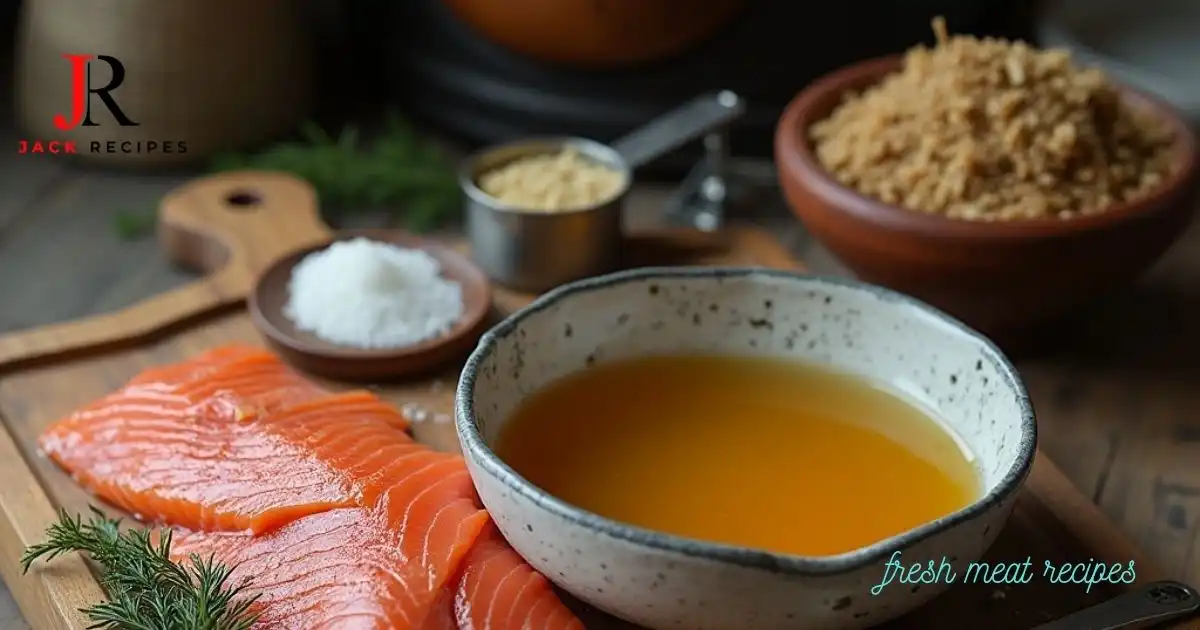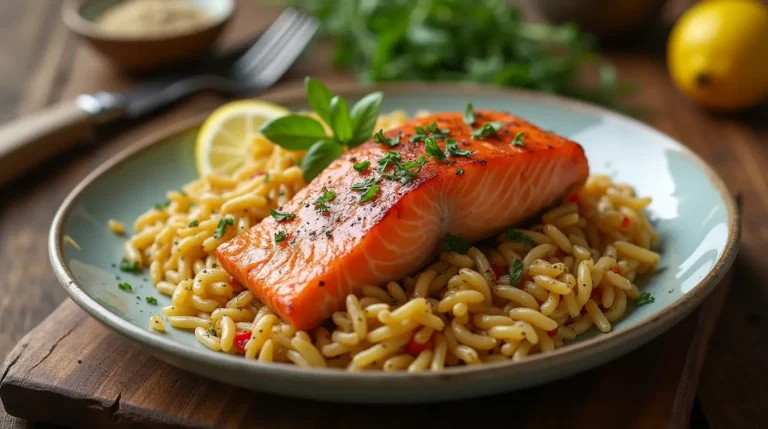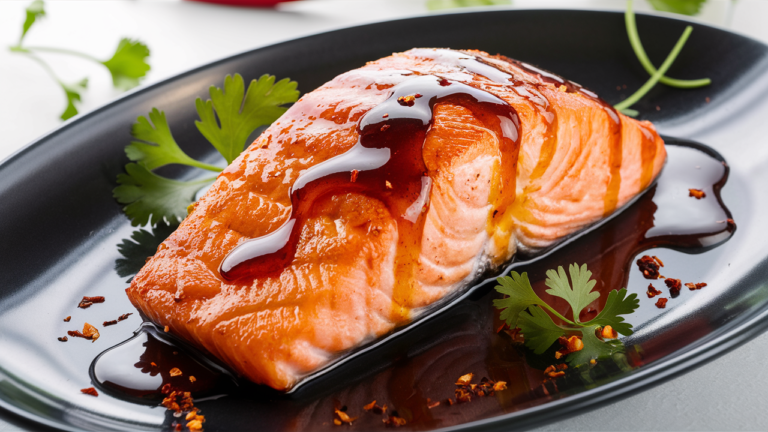How to Make Smoked Fish Brine: A Step-by-Step Guide for Perfectly Smoked Fish
Smoked fish
If you’ve ever wondered how to achieve that ideal smoky flavor, texture, and juiciness in your fish, the smoked fish brine is the crucial first step. Brining not only seasons the fish but also helps it retain moisture during the smoking process. Whether you’re a novice smoker or a seasoned pro, learning how to create and use a smoked fish brine can elevate your fish-smoking game to a whole new level.
In this guide, we’ll walk you through everything you need to know about smoked fish brine—from understanding its ingredients and benefits to crafting your own perfect brine recipe. Let’s dive in!
What is Smoked Fish Brine?
Before you even think about getting your smoker ready, it’s essential to understand what a brine is and why it’s so important.
A smoked fish brine is a saltwater solution that typically includes salt, sugar, and other flavorings like herbs and spices. The fish is soaked in this brine for several hours or even overnight, allowing it to absorb moisture and flavor. The brining process helps enhance the fish’s texture and infuses it with savory flavors that will shine through once it’s smoked.
Key Ingredients in Smoked Fish Brine
The ingredients in your brine determine the final flavor of your fish. Here’s a quick rundown of what you’ll need:
- Salt: The most essential ingredient in any brine, salt helps preserve the fish and draws moisture into the flesh.
- Sugar: Sugar balances the saltiness and aids in the caramelization process, which creates that beautiful golden-brown color on the smoked fish.
- Water: Typically used as the base for your brine. It helps dissolve the salt and sugar to create a solution in which the fish can soak.
Optional additions include:
- Herbs and Spices: Garlic, peppercorns, bay leaves, and dill are popular choices. These infuse the fish with additional flavors, making it even more delicious.
- Acidic Components: Some recipes include lemon juice, vinegar, or citrus zest to add a bit of tang and help tenderize the fish.
Why Brining is Essential for Smoked Fish
Brining does more than just season your fish. It’s a crucial step that contributes to the final flavor and texture. Here’s why it’s so important:
1. Moisture Retention
Brining ensures your fish doesn’t dry out during the smoking process. The salt in the brine helps the fish absorb moisture, which will be locked in as it smokes, giving you a juicier end product.
2. Flavor Infusion
As the fish soaks in the brine, it absorbs the salt, sugar, and any other seasonings you’ve added. This creates a depth of flavor that will remain in the fish even after smoking, making it more flavorful and satisfying.
3. Improved Texture
The brine breaks down the proteins in the fish, making it more tender and easier to eat. You’ll notice a significant difference in texture when brining is done right—your fish will be moist and flaky, not tough or chewy.
How to Make Smoked Fish Brine
Making your own brine at home is simple, and it’s the best way to control the flavors that will infuse your fish. Here’s a basic smoked fish brine recipe to get you started.
Basic Smoked Fish Brine Recipe
Ingredients:
- 1 cup sea salt
- 1 cup brown sugar
- 4 cups water
- Optional: 2 tbsp soy sauce, 1 tbsp garlic powder, 1 tbsp crushed black pepper

Instructions:
- Prepare the Brine: In a large bowl, dissolve the salt and sugar in warm water. Stir until everything is fully dissolved.
- Cool the Brine: Allow the brine to cool to room temperature. Hot brine will start cooking the fish, so it’s crucial that it’s cool before use.
- Brine the Fish: Submerge your fish in the brine, ensuring it’s completely covered. Refrigerate for 6-12 hours for medium-sized fish, or 12-24 hours for larger cuts like salmon.
- Rinse and Dry: Once the fish has brined, remove it and rinse off the excess brine. Pat the fish dry with paper towels. You can also let it air-dry on a rack for 1-2 hours to form a tacky layer called the pellicle, which helps the smoke adhere better.
Pro Tips:
- Adjust the Salt and Sugar: If you prefer a sweeter or saltier fish, feel free to adjust the sugar and salt proportions.
- Experiment with Add-ins: You can include herbs like dill or spices like coriander and fennel seeds to customize the flavor of your brine.
How Long Should You Brine Fish?
The length of time you brine your fish depends on the type of fish you’re using and your desired flavor intensity. Here’s a general guideline for brining times:
- Thin Fish (Mackerel, Sardines): 4-6 hours
- Medium Fish (Trout, Perch): 6-12 hours
- Thick Fish (Salmon, Tuna): 12-24 hours
Be cautious not to over-brine. If you brine your fish for too long, it could become too salty. On the other hand, under-brining will leave the fish lacking in flavor and moisture.
How to Smoke Fish After Brining
Once your fish has finished brining, it’s time to move to the smoker. Proper preparation is key to achieving that perfect smoky flavor.
Steps to Prepare Fish for Smoking:
- Rinse and Dry: After removing your fish from the brine, give it a quick rinse under cold water to remove any excess salt. Pat it dry with paper towels to ensure the surface isn’t too wet.
- Form a Pellicle: Allow the fish to air-dry for 1-2 hours. This step helps form a tacky layer on the surface of the fish, which helps the smoke stick better.
- Prepare the Smoker: Preheat your smoker to a temperature of 180-220°F (82-104°C). For wood, fruit woods like apple or cherry are great for fish, as they impart a mild, sweet flavor.
- Smoke the Fish: Place the fish in the smoker and allow it to smoke for 1-3 hours, depending on the thickness of the fish and your desired level of smokiness. Thin fish will smoke more quickly, while thicker cuts may take longer.
Tips for Smoking Fish:
- Monitor Temperature: A thermometer is crucial to avoid overcooking. Smoked fish should be cooked to an internal temperature of 140°F (60°C).
- Check for Doneness: The fish is done when it’s opaque and flakes easily with a fork.
Common Mistakes to Avoid When Brining Fish
Even experienced fish smokers can make a few common mistakes when brining. Avoid these pitfalls for the best results:
1. Too Much Salt
Over-salting is a common mistake. While salt is essential for brining, too much can overpower the fish and make it unpalatable. Always taste your brine before soaking your fish to ensure the salt levels are just right.
2. Not Rinsing After Brining
If you don’t rinse the fish after brining, the fish will absorb too much salt and taste overly salty. A quick rinse helps remove excess salt and ensures the flavors are balanced.
3. Brining for Too Long
Longer isn’t always better. If you leave the fish in the brine for too long, it can become mushy or too salty. Stick to recommended brining times for the best texture and flavor.
FAQ: Your Smoked Fish Brine Questions Answered
What is the best salt for smoked fish brine?
Kosher salt or sea salt is ideal for brining. These salts dissolve easily and provide the right texture and flavor. Avoid iodized salt, which can impart a bitter taste.
Can I reuse my smoked fish brine?
It’s not recommended to reuse brine, as it can harbor bacteria from the fish. For food safety, always make a fresh batch of brine for each new batch of fish.
How long does smoked fish last?
When stored in the refrigerator, smoked fish can last up to 1-2 weeks. You can also freeze it for longer storage, up to 3 months.
Do I need to rinse the fish after brining?
Yes, rinsing helps remove excess salt, ensuring your fish is perfectly seasoned and not overly salty.
Conclusion: Master the Art of Smoked Fish Brine
By understanding the science behind brining and following these tips, you can create smoked fish that’s tender, juicy, and packed with flavor. Experiment with different brine recipes and smoking times to find your perfect balance. Whether you’re smoking salmon, trout, or mackerel, brining is the key to achieving that mouthwatering flavor you crave.







